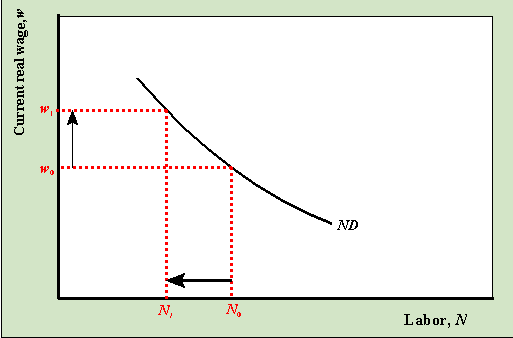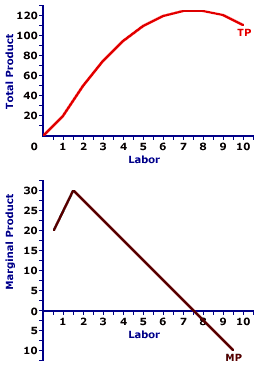Introduction to Factor Markets
Rachel Carter
9 min read
Listen to this study note
Study Guide Overview
This study guide covers factor markets in AP Microeconomics, focusing on the factors of production (land, labor, capital, entrepreneurship) and their respective payments (rent, wage, interest, profit). It explains derived demand, labor demand and supply, and the law of diminishing marginal returns. Key calculations include Marginal Resource Cost (MRC), Marginal Product (MP), and Marginal Revenue Product (MRP), culminating in the profit maximization rule of MRP = MRC. The guide also includes practice questions and exam tips.
#AP Microeconomics: Factor Markets - Your Night-Before Guide
Hey there! Let's get you prepped and confident for your AP Microeconomics exam. We're diving into factor markets, making sure everything clicks, and you're ready to ace it! 🚀
#
Understanding Factor Markets
#What's a Factor Market?
Think of the factor market (also called the resource market) as the place where businesses go to get what they need to produce stuff. It's all about the factors of production: land, labor, capital, and entrepreneurship. Households own these and sell them to businesses.
- Factors of Production:
- Land: Payment is rent
- Labor: Payment is wage
- Capital: Payment is interest
- Entrepreneurship: Payment is profit
Remember: Households supply factors, and businesses demand them. It's the flip side of the product market!
#Derived Demand
The demand for resources isn't direct; it's derived from the demand for the products they help create. Think of it this way: nobody wants a carpenter just for the sake of having a carpenter. They want a carpenter because they want a house. If the demand for houses goes up, the demand for carpenters will also increase.
- Example: If everyone suddenly wants more electric cars, the demand for lithium (a resource) will increase.
#Labor Demand and Supply
Just like in the product market, labor demand and supply have their own curves:
- Demand for Labor: Downward sloping. As wages fall, businesses want to hire more workers.
- Supply of Labor: Upward sloping. As wages rise, more people are willing to work.
Think of it like this: the labor market is just like any other market. Lower prices (wages) mean higher demand and higher prices mean higher supply.

A labor demand curve. As wage rises, the quantity of labor demanded by firms decreases, and vice versa
#Law of Diminishing Marginal Returns
This is a big one! As you add more and more of a variable resource (like labor) to a fixed resource (like a factory), the extra output from each new input will eventually decrease. It’s like adding too many cooks to a kitchen – they start getting in each other’s way.
- Example: A small bakery with one oven will see diminishing returns as they keep adding bakers. At some point, extra bakers won't add much to the total output because they're all fighting for oven space.
Don't confuse diminishing returns with negative returns. Diminishing returns means output is still increasing, just at a slower rate. Negative returns mean total output is actually decreasing with each new input.
#Analyzing Factor Productivity
#Marginal Resource Cost (MRC)
Marginal resource cost (MRC) is the cost of hiring one more unit of a resource. For labor, this is simply the wage rate. If you hire one more worker, you pay their wage.
- Total Labor Cost: MRC * number of workers
#Marginal Product (MP) and Marginal Revenue Product (MRP)
- Total Product (TP): The total amount of product produced by a certain number of workers.
- Marginal Product (MP): The additional product produced by hiring one more worker. MP can be positive, negative, or zero.
- Marginal Revenue Product (MRP): The additional revenue generated by hiring one more worker. Calculated as MRP = MP * Price (P).
Think of it like this: MP is how much more you make, and MRP is how much more money you make.
#Diminishing Marginal Product/Marginal Revenue Product
As you hire more workers, you'll eventually see diminishing marginal product (MP). This means each new worker adds less to the total output than the previous one. Since MRP is based on MP, it also diminishes.

Marginal product (MP) and total product (TP) curves. Note how MP eventually diminishes and becomes negative, causing TP to increase at a decreasing rate and then decrease.
When MP decreases, so does MRP. This means that eventually, hiring an additional worker will actually lose our firm revenue.
#Profit Maximization (MRP = MRC)
Firms maximize profit by hiring workers up to the point where MRP = MRC. This is the same logic as MR = MC from the product market.
- MRP > MRC: Hire more workers; you're making a profit on each one.
- MRP < MRC: Stop hiring; the worker is costing you more than they're making.
Remember, 'Hire until MRP = MRC' – it's the golden rule for factor markets!
#Hiring Labor or Other Resources
Firms will keep hiring resources as long as MRP > MRC and until MRP = MRC. They will never hire if MRC > MRP.
#Example Problem
Let's say the price of a product is 30/hour. Here's how to solve for the optimal number of workers:

- Calculate MP: The change in total product from one input to the next. (e.g., from 1 to 2 inputs, TP changes from 40 to 60, so MP = 20).
- Calculate MRP: Multiply MP by the price. (e.g., MP of 20 * 60 MRP).
- Compare MRP to MRC: Hire up to the point where MRP = MRC. In this case, 4 workers is the optimal number since MRP = MRC =
<exam_tip> Always calculate MP first, then MRP. Don't skip steps! </exam_tip>
Bonus:
- Profit Calculation: Total Revenue (TR) - Total Cost (TC). In this example: TR = 85 *3 = 30 + (4 * 150. Profit = 150 =
#<high_value_topic>
Final Exam Focus </high_value_topic>
#Key Topics
- Derived Demand: Understand how demand for resources is linked to the demand for products.
- Law of Diminishing Marginal Returns: Know how it affects production and hiring decisions.
- Marginal Product (MP) and Marginal Revenue Product (MRP): Calculate them correctly.
- Profit Maximization (MRP = MRC): This is crucial for both perfectly competitive and monopsonistic labor markets.
- Relationship between factor and product markets: How changes in one market can affect the other.
#Common Question Types
- Multiple Choice: Expect questions on calculating MP, MRP, and identifying the profit-maximizing level of resource use.
- Free Response Questions (FRQs): Often involve graphing labor demand/supply, calculating profit, and explaining the impact of market changes on resource allocation.
#Last-Minute Tips
- Time Management: Don't spend too long on any one question. Move on and come back if needed.
- Common Pitfalls: Be careful with diminishing returns vs. negative returns. Double-check your calculations for MP and MRP.
- Strategies: If you're stuck, try drawing a graph or table. Visualizing the problem can help.
<exam_tip> Practice, practice, practice! The more you solve problems, the more comfortable you'll be on exam day. </exam_tip>
#<high_value_topic>
Practice Questions </high_value_topic>
<practice_question>
#Multiple Choice Questions
-
A firm is hiring labor in a perfectly competitive labor market. If the marginal product of the last worker hired is 10 units and the price of the product is5, what is the marginal revenue product of the last worker? (A) 5 (C) 50 (E)
-
Which of the following best explains why the demand curve for labor is downward sloping? (A) The law of supply (B) The law of diminishing marginal returns (C) The law of increasing opportunity cost (D) The law of comparative advantage (E) The law of demand
-
If the marginal revenue product of labor is greater than the wage rate, a firm in a perfectly competitive labor market will: (A) hire less labor. (B) hire more labor. (C) maintain its current level of labor. (D) decrease the wage rate. (E) increase the price of its product.
#Free Response Question
Assume a perfectly competitive firm produces widgets using labor as its only variable input. The firm sells widgets for10 each. The table below shows the firm's total product at different levels of labor input:
| Labor Input | Total Product | Marginal Product | Marginal Revenue Product |
|---|---|---|---|
| 0 | 0 | ||
| 1 | 20 | ||
| 2 | 50 | ||
| 3 | 70 | ||
| 4 | 85 | ||
| 5 | 95 | ||
| 6 | 100 |
(a) Calculate the marginal product of labor for each level of labor input and fill in the table above. (2 points)
(b) Calculate the marginal revenue product of labor for each level of labor input and fill in the table above. (2 points)
(c) If the wage rate is
(d) If the wage rate increases to250, how many workers will the firm hire to maximize profit? Explain. (2 points)
(e) Draw a graph of the firm's demand for labor. (2 points)
#Scoring Breakdown
(a) Marginal Product Calculation (2 points) - 1 point for correct calculation of marginal product at each level of labor input - 1 point for filling the table correctly
(b) Marginal Revenue Product Calculation (2 points) - 1 point for correct calculation of marginal revenue product at each level of labor input (MP *
(c) Profit Maximization with Wage =150 (2 points) - 1 point for stating that the firm will hire 4 workers - 1 point for explaining that the firm will hire where MRP = MRC (or as close as possible without MRC > MRP)
(d) Profit Maximization with Wage = $250 (2 points) - 1 point for stating that the firm will hire 2 workers - 1 point for explaining that the firm will hire where MRP = MRC (or as close as possible without MRC > MRP)
(e) Labor Demand Curve (2 points) - 1 point for correctly labeling the axes (wage on the vertical, quantity of labor on the horizontal) - 1 point for drawing a downward-sloping demand curve through the points (1, 200), (2, 300), (3, 200), (4, 150), (5, 100), and (6, 50)
You've got this! Go get that 5! 💪
Continue your learning journey

How are we doing?
Give us your feedback and let us know how we can improve





